Resources Recordings
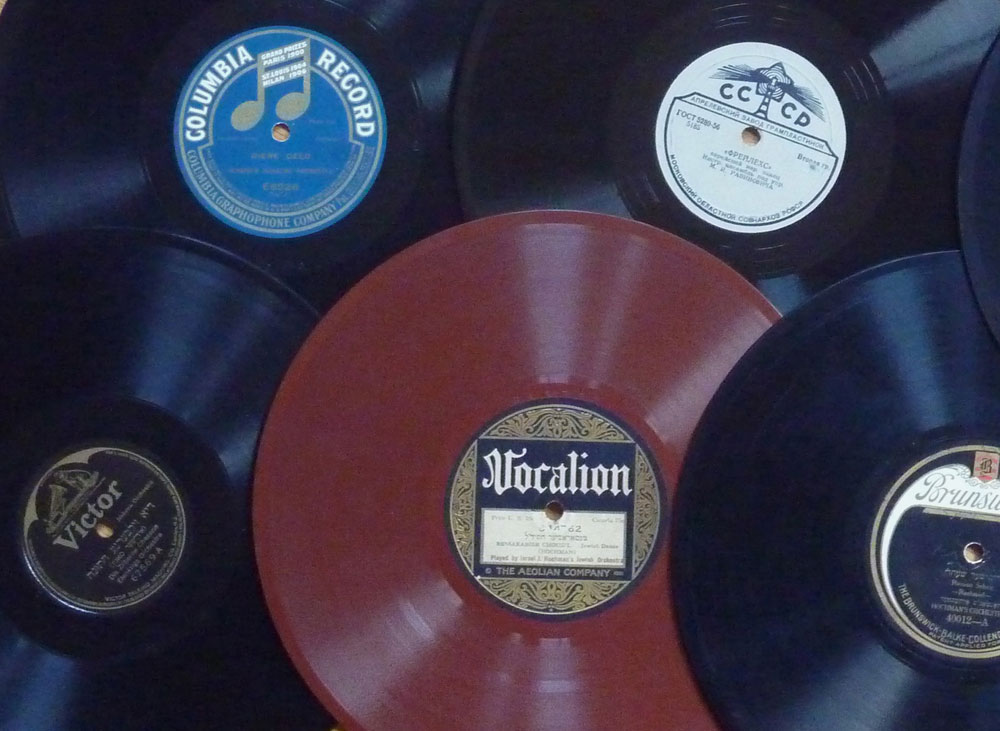
Resource Recordings for Klezmer Music from the early 20th century,
collected, edited & produced by Kurt Bjorling.
Resource Recordings for Klezmer Music
Jewish Violinists, vol.1 – Edition 2, April 2003 – 60 minutes – $10 – Buy in our Store
Solo fiddlers accompanied by either tsimbl or piano:
Josef Solinski
“Romanian Fantasies” parts 1 – 4, with alternate ‘takes’ of parts 2 and 4.
– recorded in Warsaw, circa 1910, six pieces with tsimbl accompaniment
“Oriental Motif” parts 1 and 2
– with piano accompaniment
Oscar Zehngut
“Oriental Motifs” parts 1 and 2
– recorded in Lemberg (Lvov) Poland, circa 1910-14, with piano accompaniment
Max Leibowitz
“Behusher Khosid,” “Yidish Hora – A Heymisher Freylekhs,” and “Oriental Melodies” parts 1 and 2
– recorded in New York, 1920, with tsimbl accompaniment:
“Yidisher Tants” and “Yidish Khusedl”
– recorded in New York, 1916, with Philip Friedman, piano
All but two tracks on these tapes are violin solos accompanied by either tsimbl or piano. These two tapes cover nearly every known recording in that genre.
Rumänische Fantasien 1. Teil (ca. 1910)
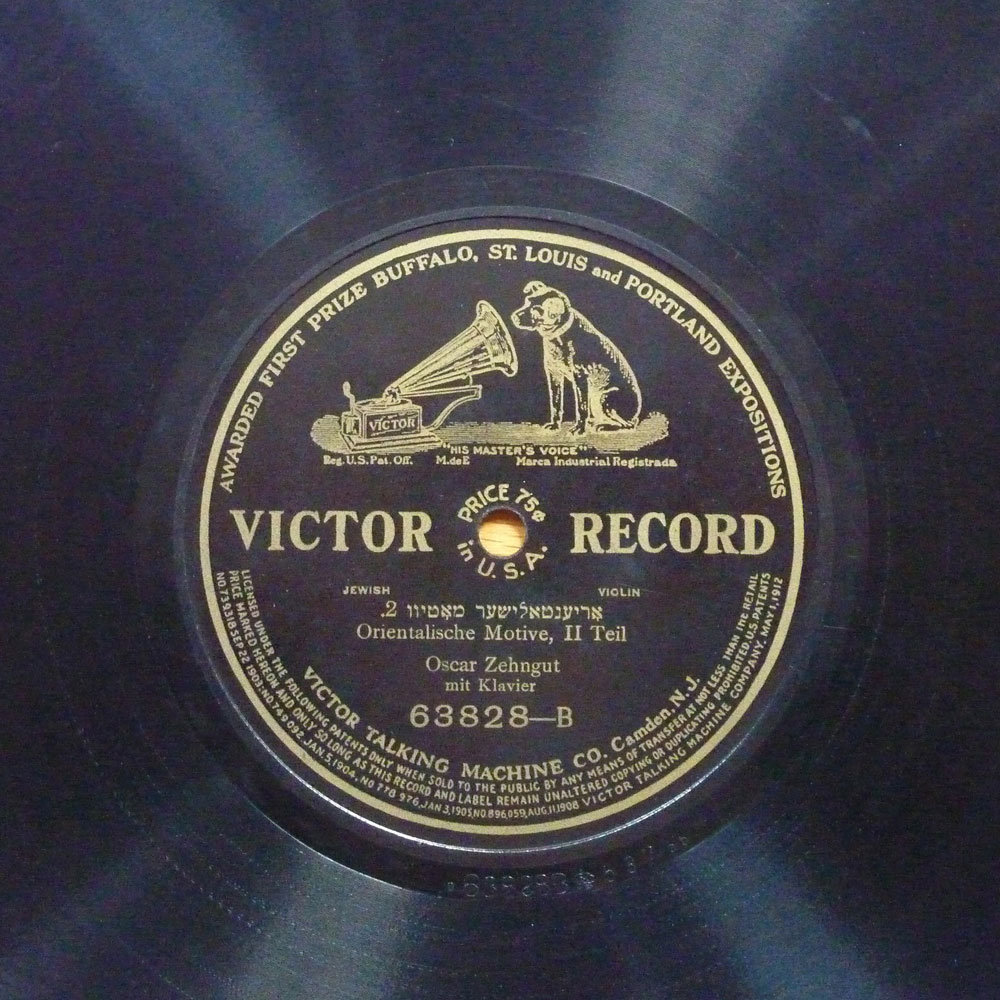
Yidish Hora
Jewish Violinists, vol. 2 – Edition 2, revised March, 2003 – 60 minutes – $10 – Buy in our Store
Solo fiddlers accompanied by either tsimbl or piano, except the last selection by M. I. Rabinovich.
Leon Ahl
“Kol Nidrey,” “Mimkomokh Malkenu,” and “Doina”
– recorded in Poland, ca 1910-1914 with tsimbl accompaniment.
H. Steiner
“Haneros haluli,” “Mizmor Shir Khanike,” and “Potpourri of Jewish Melodies” parts 1 and 2
– recorded in Poland, ca 1910-1914 with tsimbl accompaniment.
Anonymous
“Doina, Mazltov, and Honga”
– from an unlabeled test pressing, probably recorded in Poland, ca 1913, with piano accompaniment
Anonymous
“Dem Rebns Tants”
– from an unlabeled test pressing, probably recorded in Poland, ca 1913, with piano accompaniment
Doina (ca. 1910)
“Taxim,” and “A Tfileh fun Mandel Beilis”
– recorded in New York, 1921, with (possibly Lazar Weiner) piano accompaniment.
Abe Schwartz
“National Hora” Parts 1 and 2, “Rumanian Doina,” and “Oriental Hora”
– recorded in New York, 1920, with Sylvia Schwartz, piano.
M. I Rabinovich
“Bazetsn di Kale” parts 1 and 2
– recorded in Kiev, 1938, this is a recording of a large klezmer orchestra with stage actors performing a piece of badkhones. The piece features several extended violin solos of extraordinary virtuosity and expressivity.
Early Dave Tarras and Shloimke Beckerman – 90 minutes – $15 – Buy in our Store
Two of the finest klezmer clarinet virtuosos.
The 12 recordings of Dave Tarras (from 1925-28, his earliest recordings as soloist) are remarkable – very different from his more ‘Americanized’ style and repertoire of the 40’s and later!
Dave Tarras:
1925: Dem Trisker Rebns Khosid, Sha, Sha Di Shviger Kumt, Bulgar, Dem Monastrisher Rebens Khosid’l
1926: Dovid’l Basetzt Di Kale, Mayn Tayer Odesa, Nisht Gezorgt, Nor Gelebt Nor gelakht
1927: A Rumenisher Nigun, A Rumenishe Doina
Dem Trisker Rebns Khosid (1925)
1923: Trinkt Briderlakh Lekhayim, Tants-a-Freylikhs, Ot Azoy, Yismekhu, T’kias, A Galitsianer Tentsl
1924: Ayropeyishe Komarinska, Siz Freylakh Bay Yidn
Unknown date and ensemble: Ukrainian Potpurri, Russian Dances
Belf’s Romanian Orchestra Vol. 1 – REVISED and EXPANDED 2nd Edition, May 2003 – 60 minutes – $10 – Buy in our Store
Belf’s Romanian Orchestra Vol. 2 – REVISED and EXPANDED 2nd Edition , May 2003 -60 minutes – $10 – Buy in our Store
This set has been completely revised and expanded. ALL of the tracks are from new and much better transfers from original disks. This collection was formerly on one 90-minute cassette and it now is on two 60-minute cassettes. The new edition includes 11 entirely new tracks.
Skvirskaya (1912)
Nakhes Fun Kinder (1913)
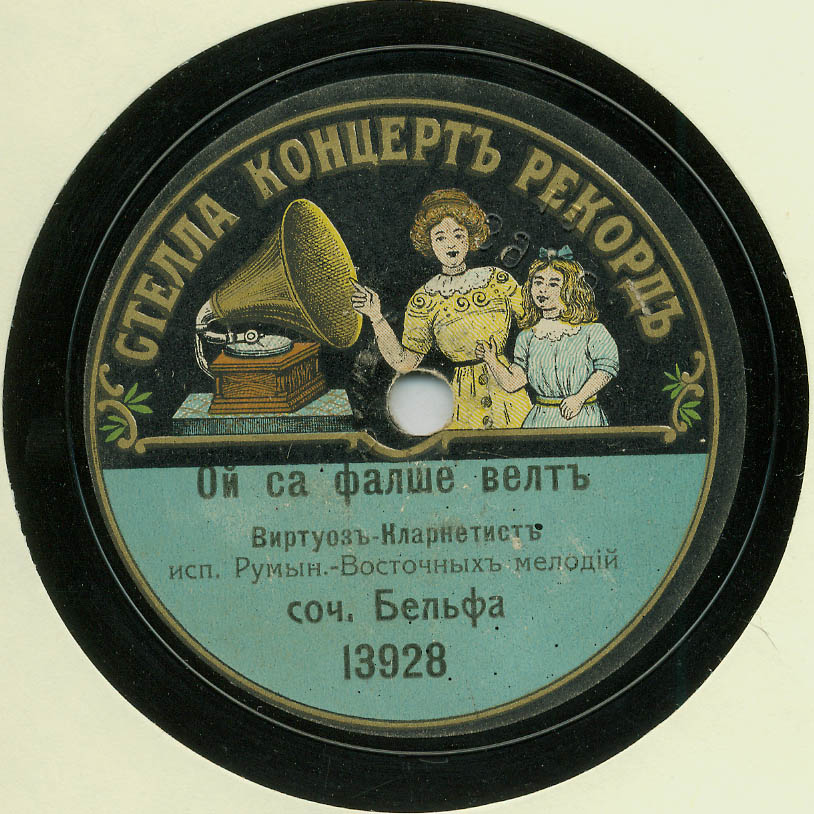
Label of Stella Kontsert Rekord no. 13928
Stella Concert Record
Oy, ‘sa Falshe Velt
(Yiddish: “Oh, it’s a false world”)
Virtuoso Clarinetist
performer of Romanian-Oriental Melodies
composed by Belf
The Stella Record Company issued more than a dozen disks with an ensemble modelled on Belf’s Romanian Orchestra. The label, somewhat deceptively, identifies the performer as playing melodies composed by Belf. The actual Belf’s Orchestra recorded “Oy, ‘sa Falshe Velt” for Syrena in 1912 (number 12425), but no copy of this record has been found.
Belf’s Romanian Orchestra – Rumynski Orkestr Belfa – Edition 2, May 2003
The ‘Belf’s Romanian Orchestra’ is a quartet consisting of clarinet, two violins, and piano. They recorded at least 60 pieces for the Syrena record company from 1912-14. Syrena was a Russian-owned record company operating in Warsaw before the First World War. These records are rare today, but they were highly influential, in both America and Europe, at the time they were made and distributed. These same recordings have also been highly influential in the ‘klezmer revival’ of today. The Belf Orchestra recorded at least 28 pieces for two other record companies, Amur and Extraphon, but none of these are yet known to exist in any collection.*
The translated label information for the Syrena disk is as follows:
Romanian Orchestra
under the direction of
Bandleader V. Belf
Most of their recordings have Yiddish titles, or Russian titles referring to Jewish themes, so the identification of ‘Romanian Orchestra’ is confusing at first. It seems, however, that ‘Romanian’ was understood (by everyone to whom it mattered) to mean ‘Jewish.’
My previous edition of this collection contained 29 pieces. This new edition contains 37 of the Belf Orchestra’s Syrena recordings plus several more pieces by a similarly configured band which recorded copies of the Belf Orchestra’s records. ALL of the recordings in this collection were edited and restored during 2001-2002 from new transfers from original disks. Most of them now sound much better than in the earlier edition and there are many entirely new pieces.
Volume 1 contains their first 20 Syrena sides, COMPLETE, all of which were originally released in 1912. The NEW pieces are: “Moldavanskaya Dudochka,” “Bolgarskaya,” “Chaban,” “Zhok,” “Rumynski Zhok,” “Rumynski Motiv” and “Bessarabski Freilekhs.”
Volume 2 contains 17 more sides released in 1912 and 1913. In addition there are three recordings from the ‘Stella Kontsert Rekord’ company of a very good band that recorded copies of the Belf Orchestra’s Syrena records. These records are even rarer than the Syrena disks and they were not even known to exist (by anyone involved with klezmer music) until very recently. As a result, we have imitaions of records that are known to have been made by Belf’s Orchestra, but for which no surviving copies have been found!
* The most extensive research into these recordings has been done by Jeffrey Wollock and his findings were published in an article, “European Recordings of Jewish Instrumental Folk Music, 1911-14” in the ARSC Journal, volume XXVIII / i 1997. (Association for Recorded Sound Collections)
Max Yankowitz (accordion solos with tsimbl or piano) and Josef Moskowitz (cymbalom solos with piano) – 90 minutes – $15 – Buy in our Store
Max Yankowitz’s complete recordings: accordion solos with tsimbl or piano, 12 sides
Josef Moskowitz (cymbalom solos with piano – his complete 1954 LP recording and 5 sides from 78rpm disks)
Sadegerer Khosid (1916)
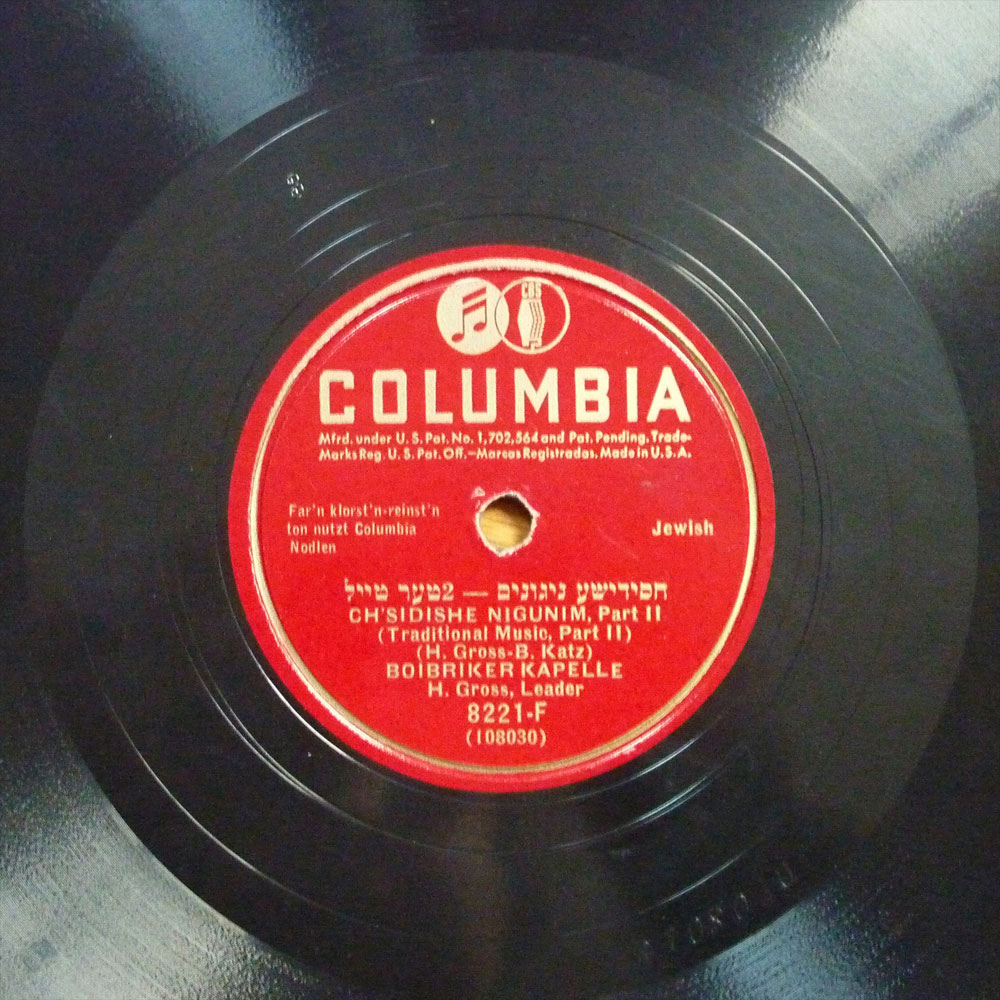
Jewish Orchestras, vol 1 – 60 minutes – $10 – Buy in our Store
One side contains 7 recordings by Lieut. Jos. Frankel’s Orchestra plus two unusual recordings by him of a clarinet and accordion duo. The other side has four tracks by Abe Elenkrig’s Orchestra from 1913 and 1915 and several more recordings (1916-17) by anonynmous Jewish and ‘Romanian’ orchestras which I believe are actually the Abe Elenkrig Orchestra.
Jewish Orchestras, vol 2 – 60 minutes – $10 – Buy in our Store
6 sides by the ‘State Ensemble of Jewish Folk Music of the Ukrainian Soviet Socialist Republic.’ Two sides by S. Young’s Orchestra (apparently the only recordings made by this band) and 11 interesting sides by the Abe Schwartz Orchestra all or most of which are NOT reissued on any other source.
Hanga (ca. 1917)
Simkhas Toyre Nokh di Hakufes
Abe Elenkrig’s Orchestra – Complete Recordings – 60 minutes – $10 – Buy in our Store
I have been wanting to get these recordings issued for a long time. It’s difficult to describe what makes them so special. Several connoisseurs consider these to be among the great neglected treasures of klezmer music. Many of the tunes are quite simple, but the texture and style of this ensemble give each of them a complex, dark, intense quality.
These 19 pieces comprise the entire recorded output under Elenkrig’s name. Four of the pieces from this set are on Jewish Orchestras, vol. 1. That edition will probably be revised or replaced soon.
Der Rebe iz Gegangen (1915)
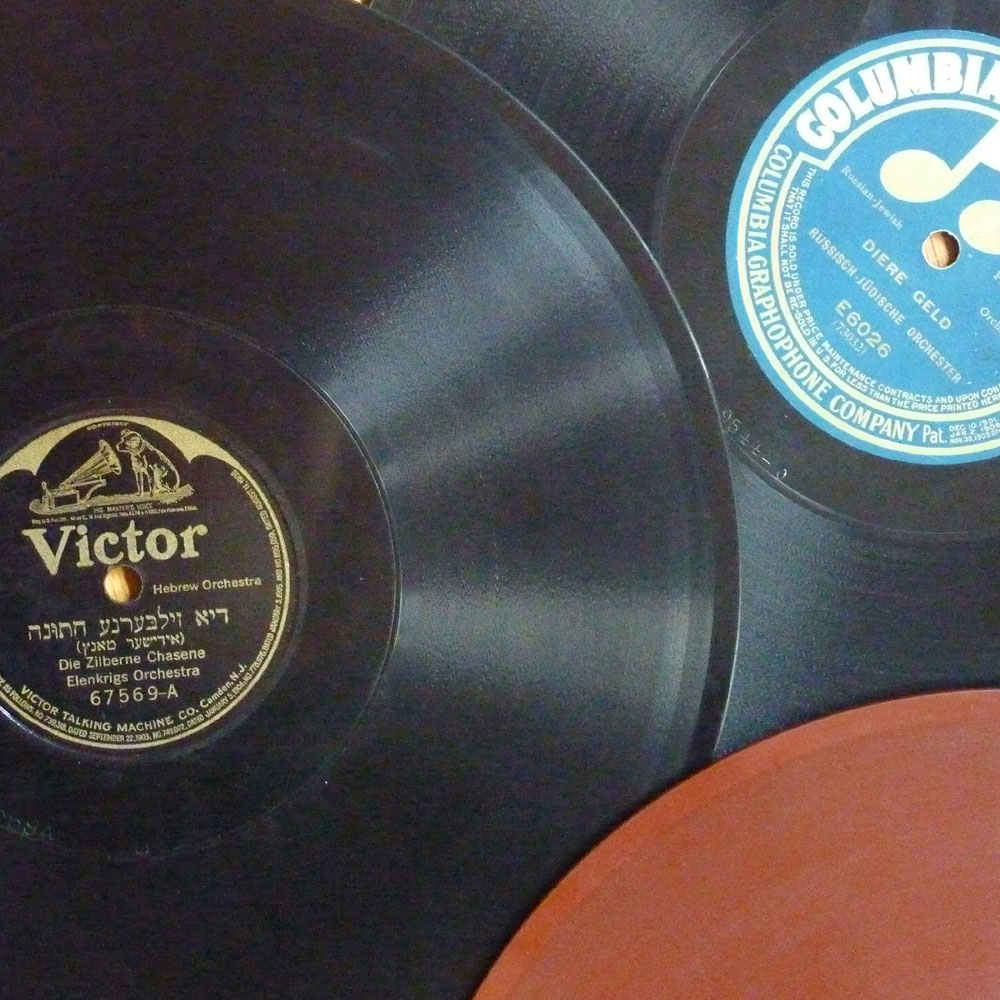
Naftule Brandwein, volume 2 – (supplement to Rounder CD 1127) – 60 minutes – $10 – Buy in our Store
“Volume 2” is perhaps a little bit misplaced here – I do not have a Volume 1. But there is an excellent CD available from Rounder Records, produced by Henry Sapoznik. This cassette supplements the contents of that CD and together they comprise almost the entire solo output of Naftule Brandwein.
(Two more Brandwein pieces appear on the Wergo CD “Oytsres” produced by Joel Rubin.)
Although the Rounder CD contains a large number of Brandwein’s recordings, expertly transferred from good-quality disks, this ‘Volume 2’ contains what I think of as some of his very best recordings two doinas, a rubato prelude and original ‘bulgar’ melody on “Lebedik Naftule,” two very revealing alternate ‘takes’ of pieces on the Rounder CD, and the masterpiece “Der Yidisher Soldot in di Trentshes”; one of the most expressive melodies in the klezmer repertoire.
(The previous edition, “Naftule Brandwein, 1922-23” has been discontinued and replaced by this new edition.)
Firn di Mekhutonim Aheym (1922)
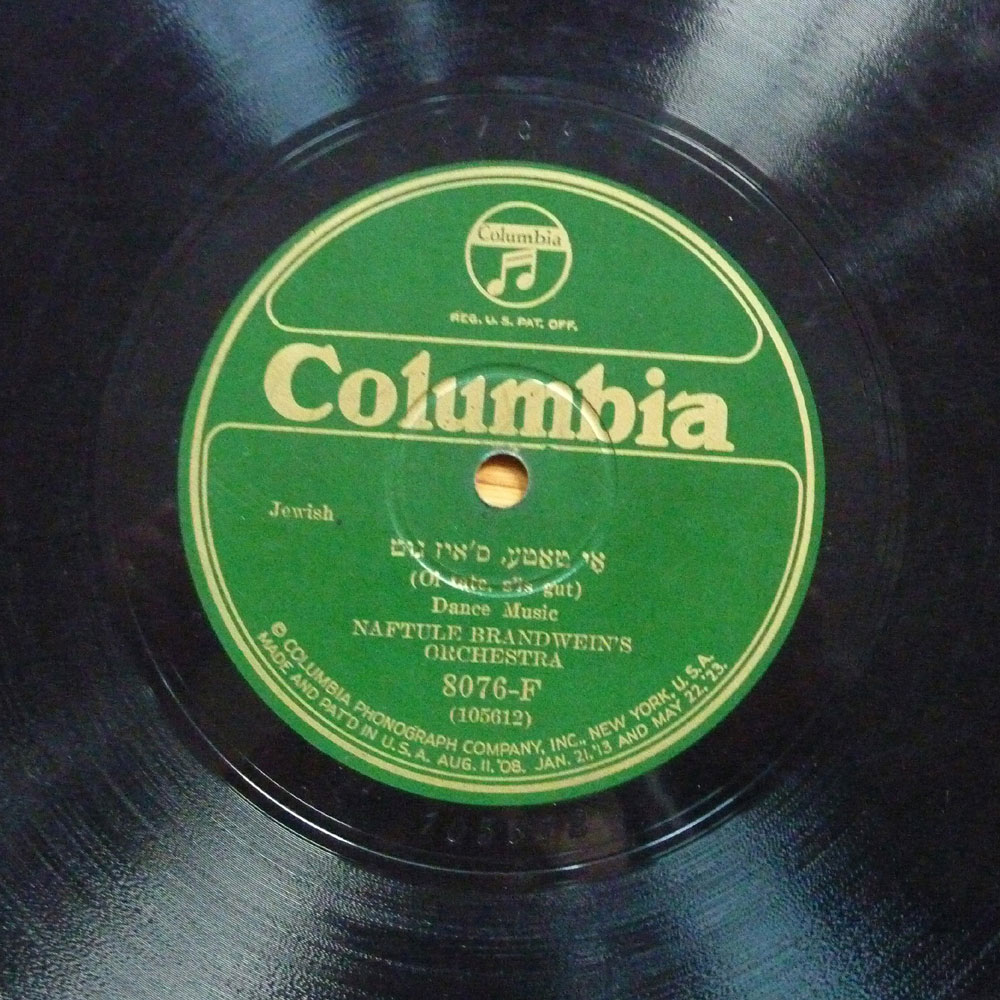
Jewish Doinas – book-and-cassette study resource – Book and tape set: $30 – Buy in our Store
Detailed transcriptions of seven vintage Doina recordings with a cassette containing the source recordings of the transcriptions plus 9 more tracks of related musical material. Itzhak Perlman has performed and recorded two of these pieces using the transcriptions from this book!
Doina
General information about recorded resources of klezmer music
Please read this if you are not already familiar with these products
Most of the collections I have assembled and offer here are specialized. Each product deals with one or two particular artists, instruments, or genres. If you are not already familiar with old recordings of klezmer music you may find it useful to sample the various possibilities by listening to some of the more general collections that are available on commercially-produced reissues. The following are some recordings which I recommend as good general samplings of klezmer music.

LP – Folkways Records, FSS 34021
Klezmer Music 1910-1942
Recordings from the YIVO Archives Compiled and Annotated by Henry Sapoznik, 1981
CD – Arhoolie / Folklyric 7034
Klezmer Music, Early Yiddish Instrumental Music, The first Recordings: 1908-1927
from the collection of Dr. Martin Schwartz, 1997
In the CD revision most of the pieces have been transferred at the correct speed so they are roughly in tune at normal pitch.
CD – Trikont US-0179 (Germany)
Yikhes, Fruehe Klezmer-Aufnahmen von 1907 – 1939
aus der Sammlung von Prof. Martin Schwartz, 1991
CD – Rounder CD 1089
Klezmer Pioneers, European and American Recordings, 1905-1952, 1993
CD – Wergo SM 1621 2 (Germany)
Oytres – Treasures, Klezmer Music 1908-1996
(address: Postfach 36 40, D-55026 Maintz, Germany)
In addition a number of recordings focusing on particular artists are issued by Global Village. The quality of the transfers tends to be poor and the quality of the material chosen is erratic. But all their products are created out of love and many of them wouldn’t be there at all except for the determined efforts of producer Michael Schlesinger. Click here for their website. Click here for an interesting article about Global Village.
* Pitch and playback speed:
It is well-known that so-called “78rpm records” were not uniformly recorded at 78 rpm. In spite of this, many reissue projects fail to correct the speeds of the old disks when they are being transferred or edited. As a result, some pieces will sound faster or slower than the original performance, and consequently they also sound higher or lower in pitch. Sometimes the difference is more than a semitone in pitch, occasionally leading musicians to learn tunes in awkward keys or to have difficulty learning from the recordings. On LP reissues this is not a big problem as pitch-adjustable turntables are fairly common. But very few CD players have any kind of pitch control, so this can be an important factor in learning from the material which was improperly transferred to CD.
Klezmer Music Resources - Sound Recordings:
A Statement of Purpose by Kurt BjorlingSoon after I began playing it, I came into contact with several people who had gained prominence as performers and/or researchers of klezmer music. ALL of these people relied heavily on recorded sources in acquiring their most basic knowledge about klezmer music and each of them had either actively sought out collections and archives of Jewish sound recordings or had direct access to them through others who had done this.
I was extremely fortunate in that several of these people were willing to make copies for me of some of these rare recordings. In particular, Joel Rubin, Pete Sokolow, and Henry Sapoznik, without my asking them for anything, went out of their way to send me important recordings that I didn’t even know existed. In addition, Hankus Netsky made a series of compilations on cassettes which he distributed to staff and students at YIVO’s “Klezkamp” in 1986, 87, 88, & 89. These served as a rough early model for the series of collections I now produce.
During these years I noticed two important things:
- In spite of the growing interest and participation in klezmer music, access to valuable resources did not generally improve.
- Those of us who taught klezmer music at workshops and ‘camps’ often made reference to these historical recordings in describing or supporting the suggestions we made – as if these resources were familiar to all our students!
I realized that if klezmer music was ever to mature as a contemporary musical style this knowledge gap would somehow have to be filled. I began bringing cassettes of klezmer music to the workshops where I taught around the world. Eventually I started receiving calls and letters from people looking for more material. This process has continued up to the present with an ongoing series of additions and refinements.
The people who use my resource collections are not just beginners at klezmer music. Many of them are leading performers and teachers, including some of the musicians who shared what they had with me when this process was just beginning.
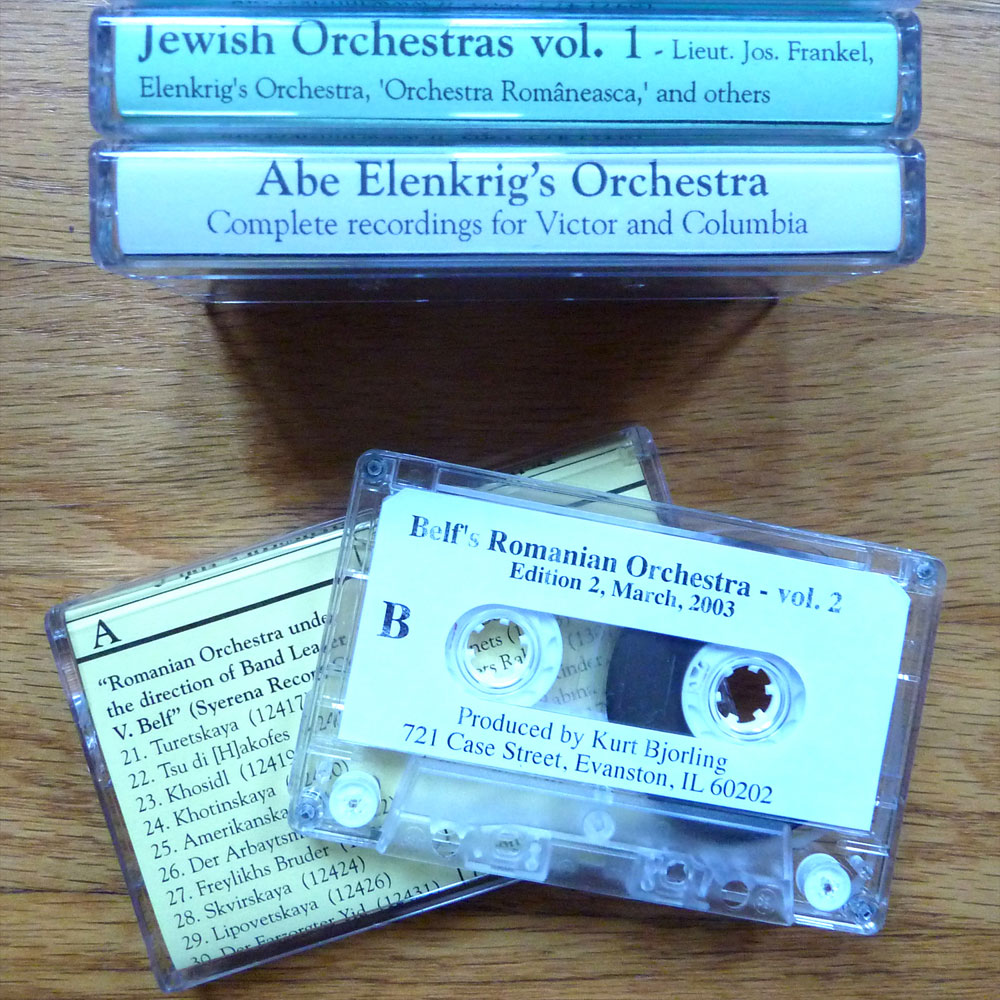
Scratchy old records
About my resource collection, technical limitations, etc...- 1. The source records, some of them one-of-a-kind, are sometimes in poor condition. Many of them were poorly recorded to begin with, so even in good condition the sound that can be got from them is poor.
- The equipment I have is very advanced compared to home audio systems, including devices specially made for processing old phonograph records. But, as good as my equipment is, I cannot do as well as a professional working with certain extremely expensive equipment.
Some of the record companies that do issue CDs of this material will only include pieces for which a good-sounding copy exists. But some of the best and most interesting recordings of klezmer music are not to be found in such good condition! My collections are as complete as I can make them, with emphasis on material that I believe to be musically or historically important, regardless of the condition and quality of the source, so there are some almost painfully scratchy old sounds among the resources I offer.
All that having been said, however, sometimes the quality I can provide is indeed quite good and I am pleased to say that many who use these resources find the quality of some things to be superior to that of many of the CDs that are available.
